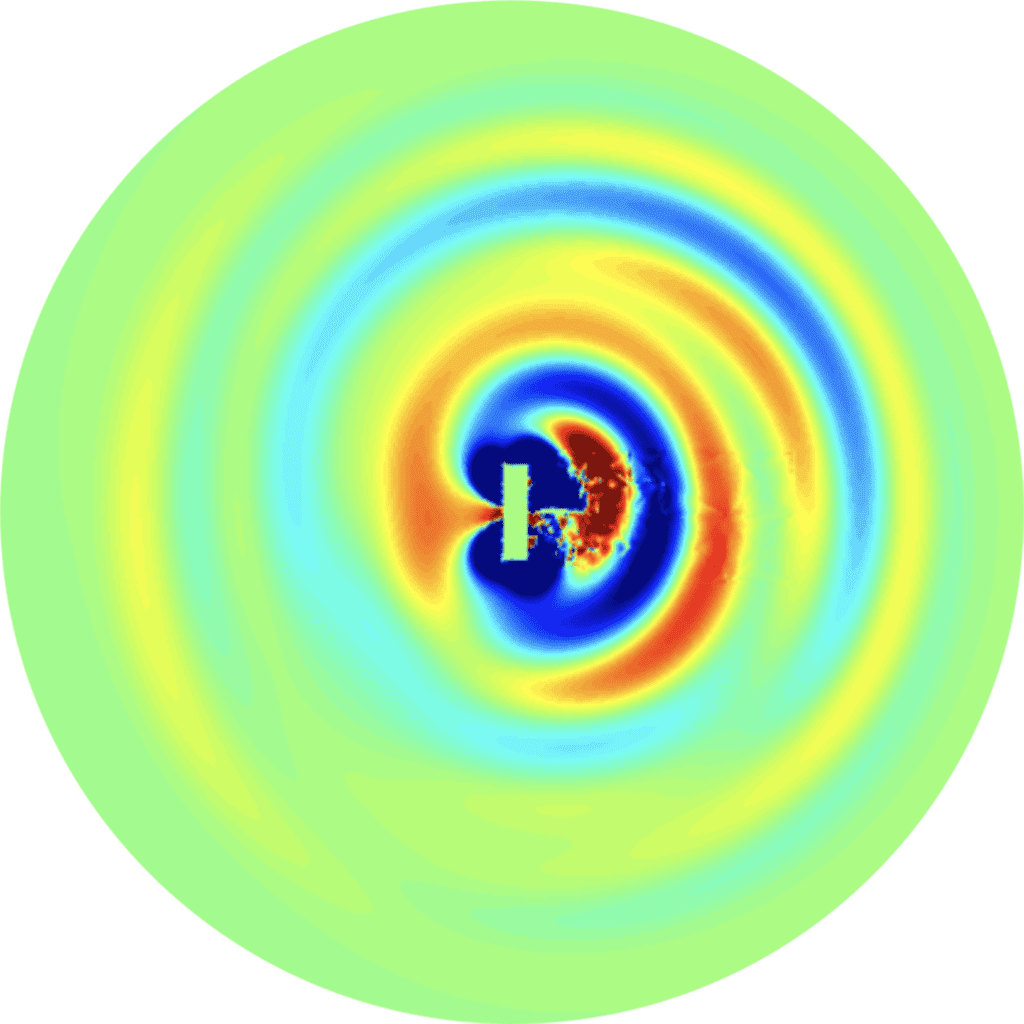We are offering the design and consulting services in the fields of acoustics, vibro-acoustics and aero-acoustics. Our advanced methods allow to perform analyses and numerical simulations in both the frequency and time domain. These include, for example: determination and visualisation of acoustic fields, Fourier analysis, environmental noise analyses with different weightings, e.g. the A – weighted scale. Sound and mechanical noise sources, which are necessary for numerical simulations, are usually obtained from other numerical simulations, such as for example flow or structural simulations, experimental or analytical data (e.g. analytical modal solutions). In order to ensure maximum accuracy (high order approximation) for acoustic propagation, the numerical simulations are performed by using either the Finite Element Method (frequency domain) or Discontinuous Galerkin Method (time domain). In addition to the simulations of typical acoustic, vibro-acoustics and aero-acoustics phenomena, our methods allow to model accurately and efficiently different types of acoustic treatments, such as sound-absorbing materials (a large database with variety of materials), bulk absorbers with fibrous or porous materials and acoustic liners (honeycomb structures with perforated face sheet). The acoustic radiation is computed separately from a near field solution either by means of the Finite/Infinite element approach or the Ffowcs-Williams and Hawkings approach.
Our techniques and methods allow to perform a wide range of numerical simulations in the fields of acoustics, vibro-acoustics and aero-acoustics, such as:
- Sound generation as a result of mechanical vibrations by different types of surfaces/component;
- Turbomachinery noise, such as fan/propeller, compressor/turbine noise generation and propagation;
- Sound propagation in different inlet and outlet systems, e.g. intake and exhaust systems of jet engines, outlets from heating, ventilation, and air conditioning (HVAC) systems;
- Aerodynamic noise, e.g. generated by high speed train pantograph, aircraft landing gear, side mirror of a car;
- Structure-borne sound generation and transmission, e.g. mechanical energy transmitted through a rocket structures as mechanical vibrations and reconstructed as an intense acoustic field inside the payload compartment;
- Modelling of sound absorption, e.g. sound absorption by absorbing barrier panels with fibrous or porous materials, sound absorption by Helmholtz resonators (resonant cavity absorbers).
These advanced capabilities are developed based on the Actran software.

CAA study to simulate propeller – wing interaction tonal noise generation, propagation and radiation to the far-field.

